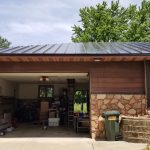By Jennette Barnes for South Coast Today
It’s always sunny on the cranberry bogs, except when it’s cloudy.
Things are pretty cloudy right now for the cranberry industry, and growers in Dartmouth, Carver and other towns are turning to solar panels to brighten up their profits.
“Cranberries aren’t paying anymore,” said Louis Paduch, 84, a grower in Carver who has watched the market change for a generation and seen his son, Mike, take the plunge to cover a bog with solar.
The price of cranberries fluctuates, just like the price of other agricultural products. But Paduch fears today’s slump is a long-term thing, fed by oversupply from big bogs outside Massachusetts.
He said a number of local farmers are simply letting their bogs go. The weeds are creeping in.
“They’re little forests,” he said. “Yes, that’s happening here. Nobody’s talking about it.”
Dartmouth has about 115 acres of bogs. It also has a bylaw that could get in the way: a prohibition on large-scale solar projects in residential areas.
The town is considering amending the bylaw because solar panels have been proposed for about 30 acres of bog owned by Fred Bottomley at 293 Flag Swamp Rd. Solar development company NextSun Energy is working with Bottomley on a proposal that would fit within Massachusetts’ new Solar Massachusetts Renewable Target (aka SMART) Program. The program provides incentives for sustainable solar energy production, including on agricultural land.
One difference between the Dartmouth proposal and Mike Paduch’s solar bog, which is on Main Street in Carver, is Paduch owns the land. In Dartmouth, NextSun intends to buy it.
Company president and founder Jacob Laskin said NextSun has a relationship with a cranberry management company that would probably care for the bog. Dartmouth’s would be his first solar project on a bog.
The panels would be raised at least 10 feet above the vines to allow for harvesting underneath, whereas the lowest part of the panels on Paduch’s bog is only three feet above the vines.





